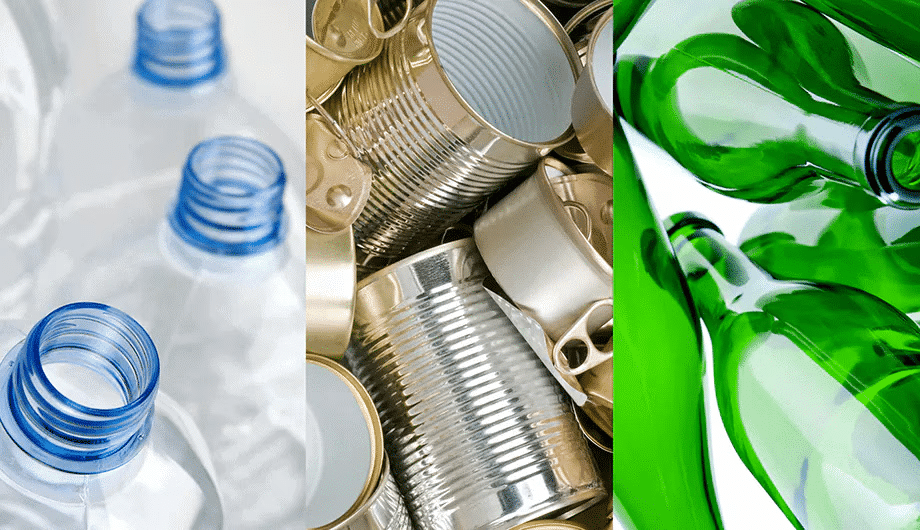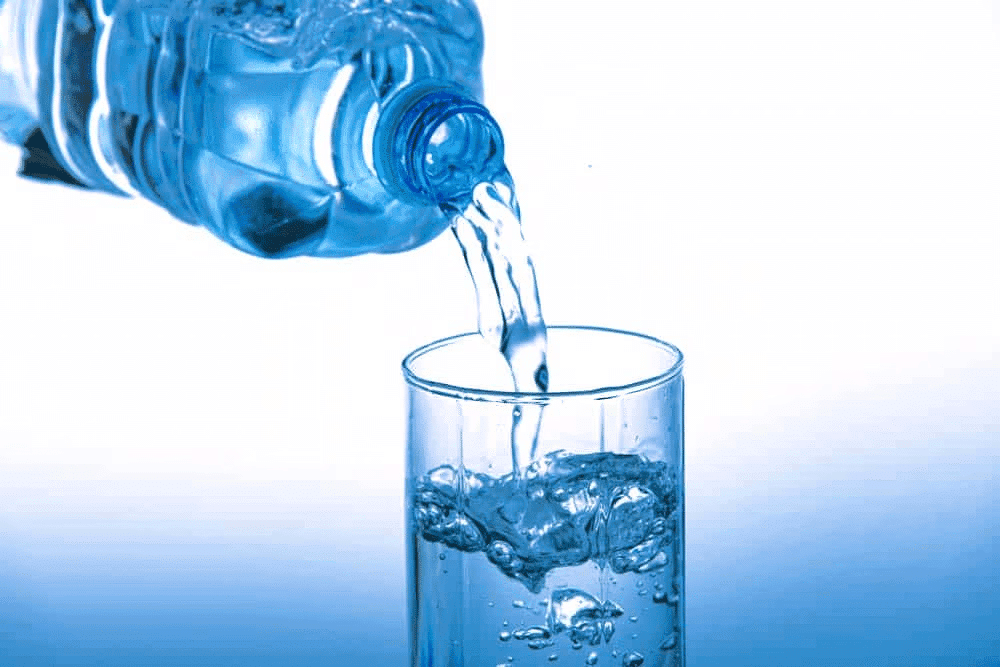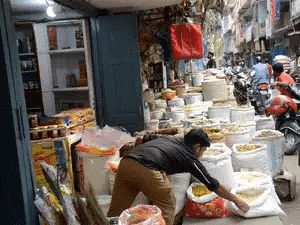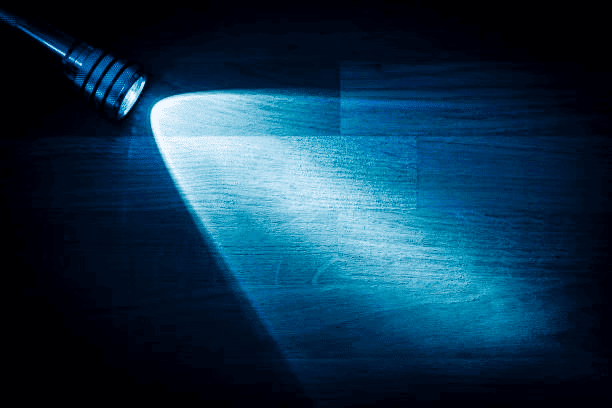Short & Long Question Answers: Materials Around Us | Short & Long Answer Questions for Class 6 PDF Download
Short Question Answers
Q1. Write any four properties of materials.
Ans: Properties of materials as follows:
- Appearance: The way a material looks, including its colour and texture.
- Hardness: How resistant a material is to being scratched or dented.
- Solubility: The ability of a material to dissolve in a liquid.
- Float or sink: Whether a material will float on water or sink.
Q2. Why is a tumbler not made with a piece of cloth?
Ans: We use tumblers made of glass, plastic, and metal to hold liquids. A tumbler made from cloth cannot serve this purpose because:
- Cloth isn't strong enough to hold liquids
- Cloth has tiny pores that allow liquids to seep through.
 Glass, plastic and MetalQ3. What are the similarities between iron, copper and aluminium?
Glass, plastic and MetalQ3. What are the similarities between iron, copper and aluminium?
Ans: Similarities between iron, copper, and aluminium:
- All three have a lustrous appearance.
- They are classified as metals.
- Each is known for its hardness.
Q4. Mention some materials which are made up of paper.
Ans: Materials made of paper include:
- Books
- Notebooks
- Newspapers
- Toys
- Calendars
Q5. Why is water important for our body?
Ans: Water is essential for our body for several reasons:
- It helps to dissolve many substances, aiding in various bodily functions.
- Water is a major component of our cells, crucial for their structure and function.
- It plays a vital role in regulating body temperature and maintaining overall health.
 Water
Water
Q6. What is the basis for sorting materials?
Ans: Materials are sorted based on their properties. They can be grouped by:
- Similarities in characteristics, such as colour or texture.
- Dissimilarities, like hardness or flexibility.
Q7. What is the reason for grouping materials?
Ans: Materials are grouped for several reasons:
- To facilitate the study of their properties.
- To observe patterns in these properties.
- To simplify the classification and understanding of different materials.
 Grouping MaterialsQ8. ‘Grouping of objects helps the shopkeeper.’ Justify the statement.
Grouping MaterialsQ8. ‘Grouping of objects helps the shopkeeper.’ Justify the statement.
Ans: Proper grouping of objects aids shopkeepers in several ways:
- Easy location: Shopkeepers can find the required items quickly.
- Stock awareness: They can easily identify which items are running low and need restocking.
Long Question Answers
Q1. Describe an experiment to prove that water is transparent.
Ans: To demonstrate that water is transparent, follow these steps:
- Fill a beaker halfway with clean water.
- Place a coin at the bottom of the beaker.
- Leave the beaker undisturbed in a well-lit area for a few minutes.
- Look down from the top of the beaker.
If you can see the coin clearly, this shows that water is a transparent liquid.
Q2. Write an experiment to show that our palm is translucent.
Ans: To demonstrate that our palm is translucent, follow these steps:
- Find a torch and a dark room.
- Cover the torch's glass with your palm.
- Switch on the torch.
- Observe the light passing through your palm from the other side.
 Torch in dark roomQ3. How can you show that some solids like sugar, salt are soluble in water whereas solids like chalk powder and sand are not soluble in water?
Torch in dark roomQ3. How can you show that some solids like sugar, salt are soluble in water whereas solids like chalk powder and sand are not soluble in water?
Ans: To demonstrate the solubility of certain solids in water, follow these steps:
- Gather samples of sugar, salt, chalk powder, and sand.
- Prepare four beakers, filling each about two-thirds full with water.
- Add a teaspoon of sugar to the first beaker, salt to the second, chalk powder to the third, and sand to the fourth.
- Stir the contents of each beaker with a spoon or stirrer.
Observe the results:
- Sugar and salt will dissolve in water, indicating they are soluble.
- Chalk powder and sand will remain undissolved, showing they are insoluble.

















